Amerigo’s lasagna on the cover
Lasagna enters the scene like a singer on stage. After all, it is a work with overlapping layers, a score of deep green and red sheets, a grammar that is only accessible to those who know the order of things: pasta, ragù, béchamel sauce, Parmigiano Reggiano—and again, seven times, like a culinary rosary. Those who treat it as a “simple” dish have never witnessed its construction: it is domestic architecture, slow chemistry, peasant precision. That is why, despite its global fame, finding it properly executed in quality restaurants remains a rarity: tradition dictates that it be prepared, assembled, cooked, and left to rest, never reheated, never rearranged halfway through cooking. “Lasagna is a difficult dish, perhaps one of the most difficult,” says Massimo Spigaroli, as reported by Michelin in Matteo Morichini’s beautiful special. “It requires many ingredients and therefore many recipes that must then coexist, in order, in the same baking dish.” The memorable result has an ethical dimension even before a technical one: never overloaded, never dry, always in balance.
 Origins: from ancient cuisine to Emilian codification
Origins: from ancient cuisine to Emilian codification
Before becoming an Emilian emblem, lasagna crossed centuries and dialects. The name stumbles upon the Roman laganum (a rough sheet of water and flour), then refines itself in the Middle Ages: veils of pasta cooked in capon broth, cheese, and spices to finish. In the 14th century, Fra Salimbene de Adam noted the voracity of a monk in front of layers covered with cheese; the “Liber de coquina” at the Angevin court of Naples bears witness to its presence.
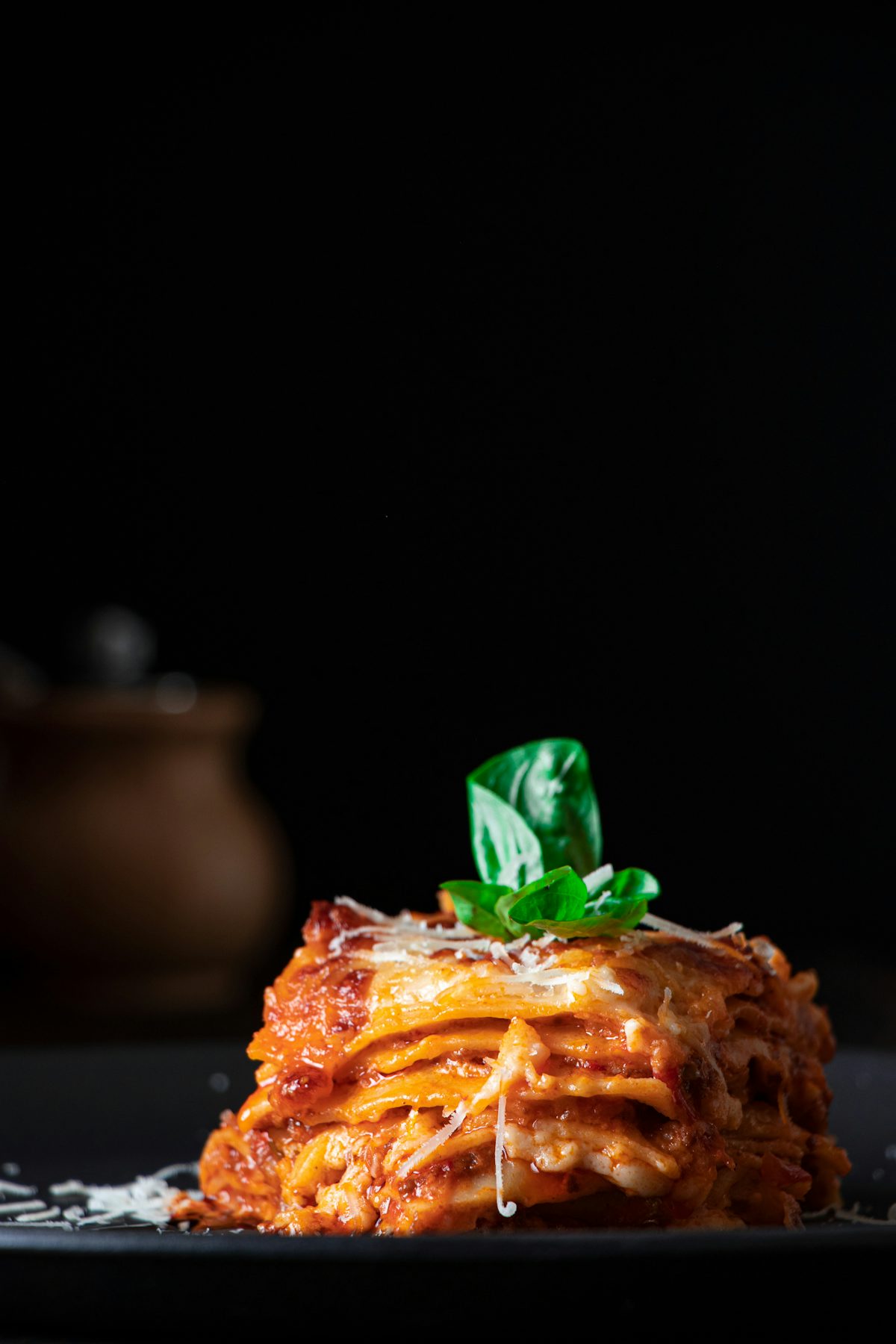 Unsplash
Unsplash
The Renaissance added eggs to the mixture (and, according to some accounts, the first forms of mozzarella), while béchamel sauce from France entered the scene around the 1700s. The final piece of the modern canon arrived in the 1800s: in 1881, in the Neapolitan area, Francesco Palma published the first account of lasagna with tomato sauce in Il Principe dei cuochi o la vera cucina napoletana (The Prince of Cooks or True Neapolitan Cuisine). The legend was ready; Emilia would, over time, give it its method.
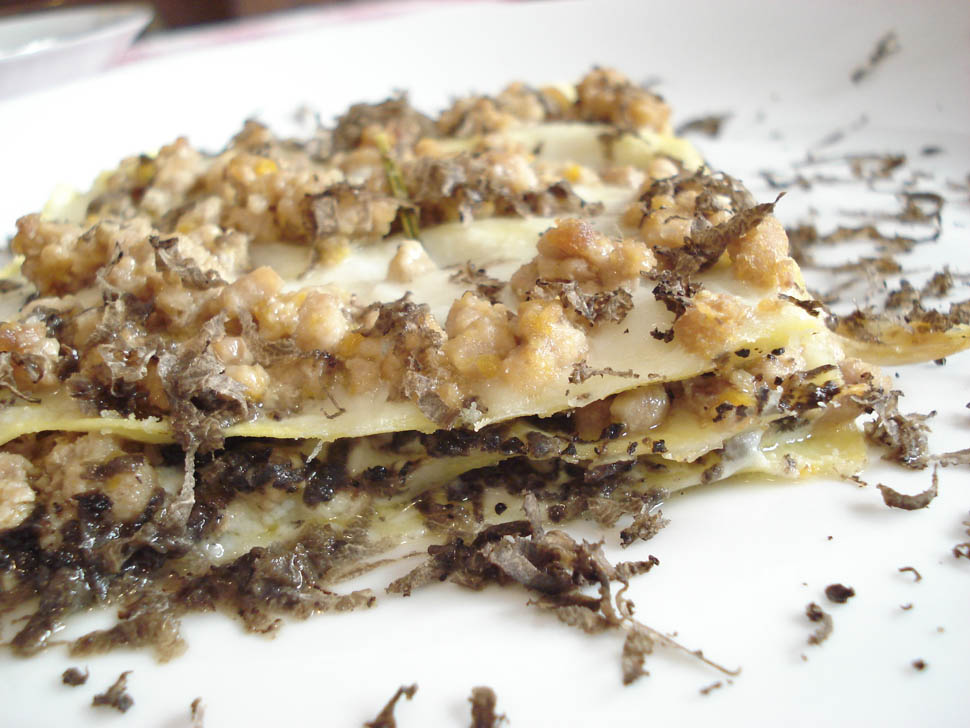 Trattoria Da AmerigoVariations on a theme: Italy as seen in the oven
Trattoria Da AmerigoVariations on a theme: Italy as seen in the oven
If today we celebrate Emilian lasagna—and, in particular, the recipe “registered” in Bologna—we cannot ignore its talent for interpretation. In Naples, generosity is declared: meatballs, meat sauce, ricotta, caciocavallo cheese. In the Marche region, Vincisgrassi loves chicken giblets. In Genoa, greens become pesto; in Veneto, Treviso radicchio replaces spinach in the mixture; 18th-century Milanese lasagna layers truffles, butter, Parmesan, cinnamon, chicken fillets, and mushrooms. Parallel stories of a single desire: to bring together flavors and families.
Trattoria da Amerigo (Savigno) – One MICHELIN star
In Savigno, in the foothills of Bologna, Trattoria da Amerigo transforms lasagna into a seasonal atlas. MICHELIN inspectors describe it as an “Italian-style trattoria” that takes diners on a nostalgic journey: not melancholic, but conscious. Alberto Bettini has created a refined repertoire: alongside the classic ragù lasagna, he offers the older “lasagna as in Bologna at the end of the 19th century,” with spinach between the layers instead of in the dough.
The calendar dictates the rest: chanterelle mushrooms with potatoes and ricotta; white ragù and prized black truffle; white ragù and scorzone black truffle; green asparagus from Valsamoggia. Lasagna is no longer just for Sundays, but for all seasons.
La Porta Restaurant (Bologna)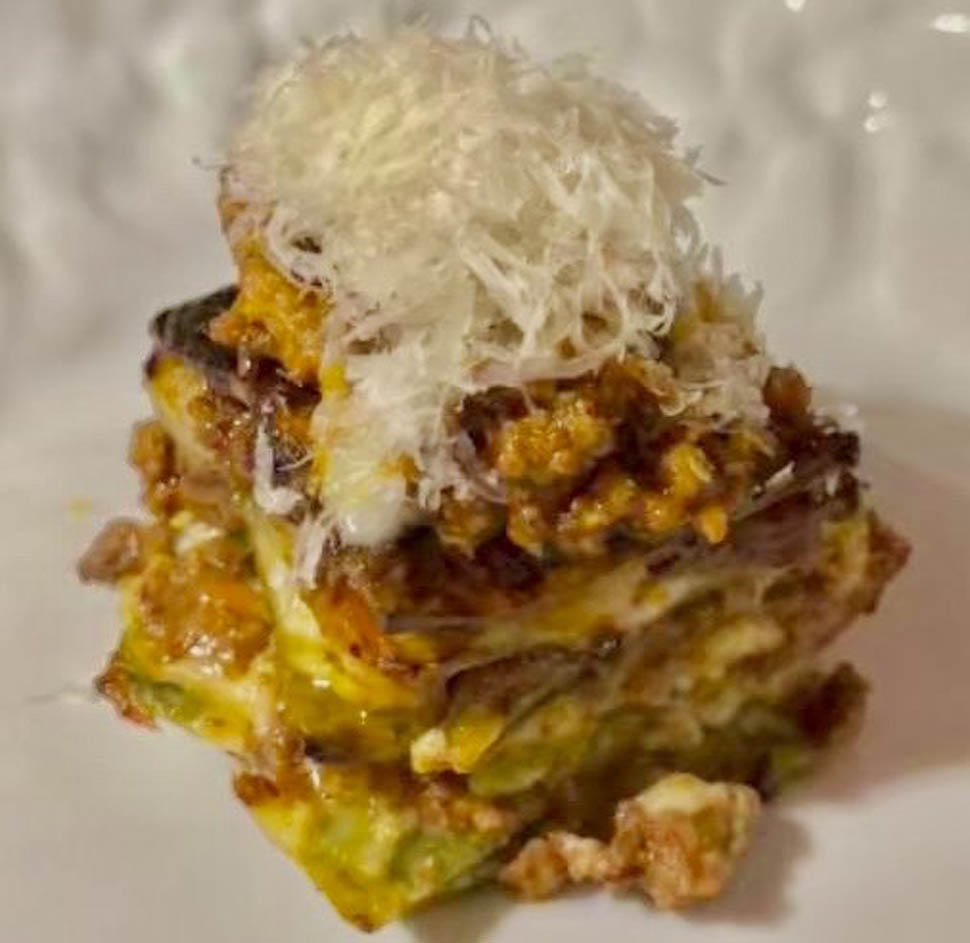
In the capital, Guglielmo Araldi reaffirms the liturgy: green egg pasta with spinach, homemade béchamel sauce, mixed meat ragù—sautéed vegetables, tomato paste, red wine, pancetta, sausage, minced pork, beef—and Parmigiano Reggiano cheese. Before assembly, the sheets are blanched, then passed through water and ice. The baking dish is started with béchamel sauce, then seven layers—each seasoned with cream, ragù “a poggia,” and Parmigiano. Bake at 165°C for about 75 minutes, rest, and cut into squares. Here, the cuisine speaks with the clarity of well-explained rules.
La Nuova Roma (Sasso Marconi) – Bib Gourmand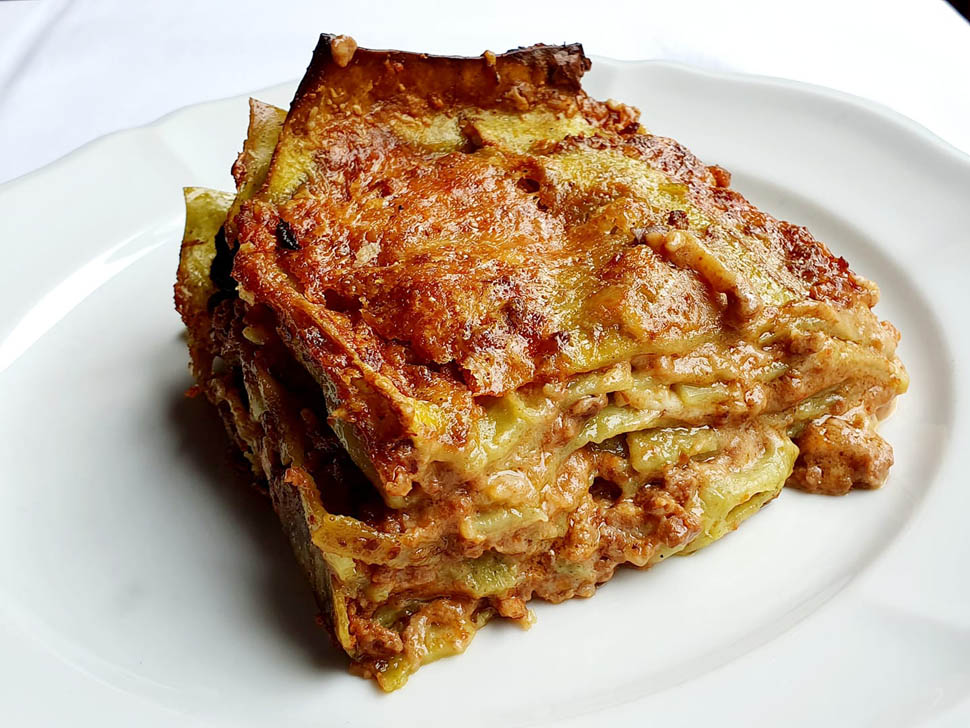
Fourth generation, a restaurant with a family feel. Omar—in the dining room with his mother Marinella; in the kitchen with Elvina, Aunt Patrizia, and chef Luca—explains the choice: made to order only. “Lasagna is an institution to be respected: it is taken out of the oven and left to rest for 30 minutes. It should never be reheated or taken out halfway through cooking for convenience.” The recipe calls for seven layers with Bolognese sauce and béchamel, green pasta with spinach, and dough rolled out with a rolling pin. The teachings of grandmothers, translated into practice.
Clinica Gastronomica Arnaldo (Rubiera) – One MICHELIN star
In Italy’s longest-running Michelin-starred restaurant (macaron since 1957), traditions are fundamental. The “Spugnolata Mignon” shines: white baked pasta with béchamel sauce, meat filling, and mushroom sauce from the Apennines. It was invented by Arnaldo and his daughter Anna in the 1960s; today it is made by chef Roberto Bottero and his wife Ramona.
The house philosophy: nothing is thrown away. The meat filling is made from leftovers from the boiled meat trolley. Hand-rolled pastry, seasoned layers, baked molds. “This dish—says Bottero—preserves the sweet memory of everyday care: the taste of home and family.”
La Lumira (Castelfranco Emilia)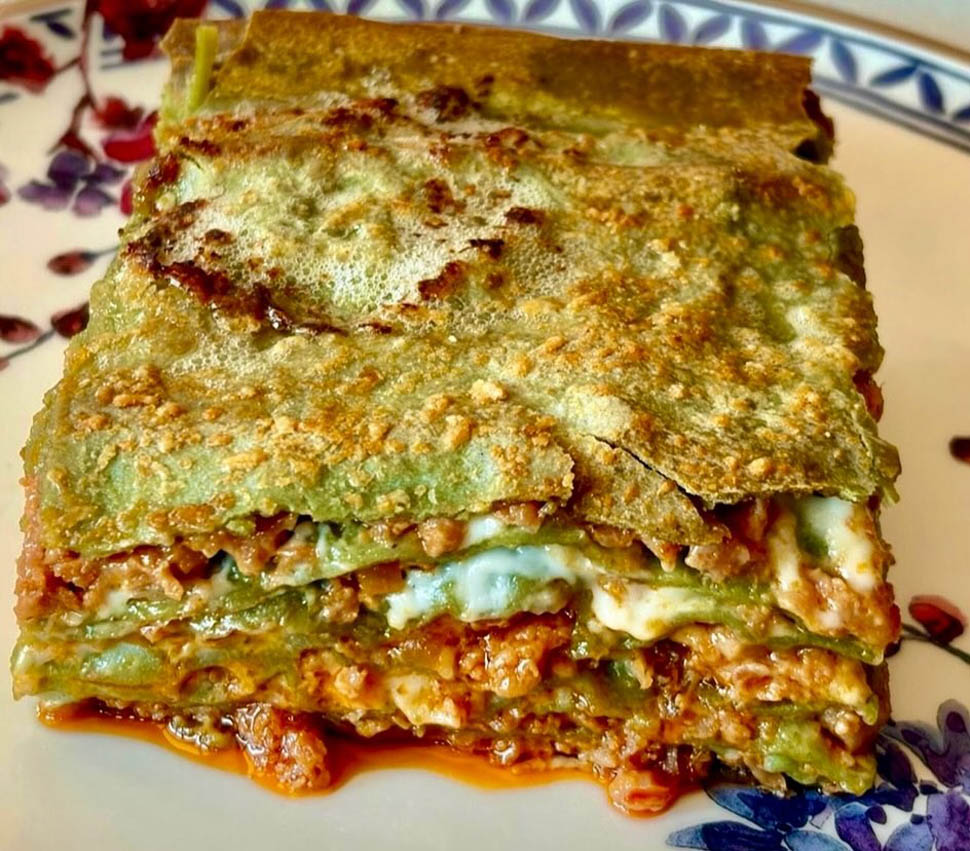
For Carlo Alberto Borsarini, traditional lasagna is made to order and only served on Sundays and holidays. The versions made by our grandparents were dry, simple, and rigorous: a sparing amount of béchamel sauce, topped with a single layer of pasta and flakes of butter to crisp up the surface and achieve that crunchiness that is so celebrated today and, paradoxically, has disappeared. The “degradation,” he says, comes when the dish moves from the kitchen to the rotisserie: excessive amounts of ragù and béchamel sauce. The result is soft, melt-in-the-mouth lasagna, comforting but lacking in complexity. A criticism that is, ultimately, an invitation to moderation.
Bottega Aleotti (Crevalcore)
Demis Aleotti, from Salerno, creates a lasagna with an “almost Renaissance approach”: lamb ragù (from the Rizzieri butcher’s shop in Ferrara), processed to soften its character; béchamel sauce enriched with egg yolk for silkiness; asparagus tips from the Barbieri garden to add crunchiness and bitter freshness. It is a variation that respects the rules and plays with nuances.
Antica Corte Pallavicina (Polesine Parmense) – MICHELIN star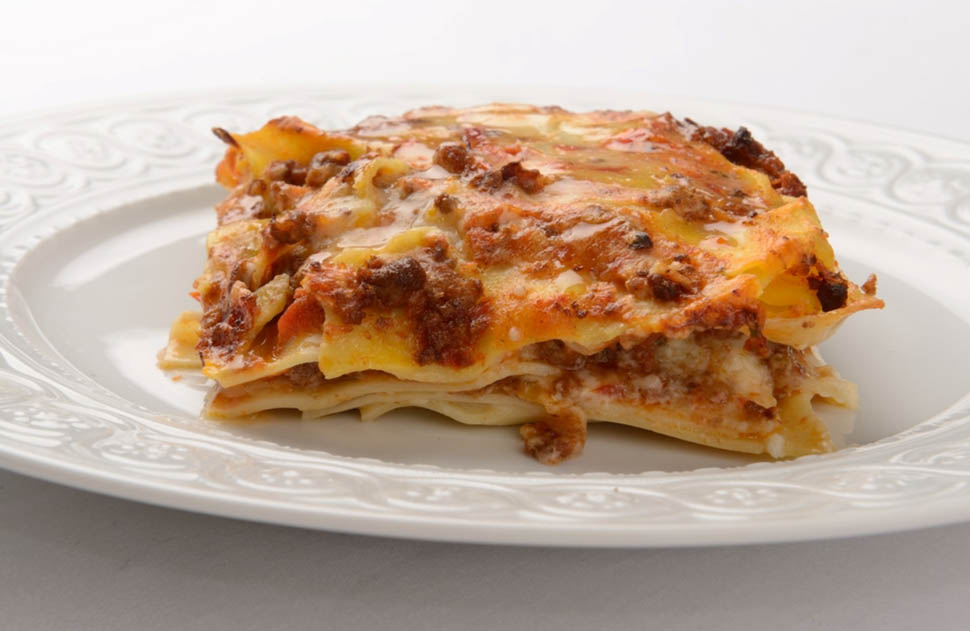
Built by the Marquises Pallavicino in 1320 next to the Po River, Antica Corte Pallavicina—a member of Teritoria—is a place steeped in history (the same culatelli that Spigaroli’s great-grandfather produced until 1882 for Giuseppe Verdi). Here, the chef creates his signature “Aunt Emilia’s” lasagna: thinly rolled egg pasta, 10 eggs per 1 kg of flour. The sheets are blanched for no more than a minute, then water and ice, then drained again—delicacy is the rule.
“It’s the recipe I’ve seen made since the beginning, the real one. I prepare it out of respect for my family and my history. It’s not an ‘old’ dish: it’s gratitude to the territory.” Words that weigh as much as a ladleful of ragù.
Essentia (Castrocaro Terme)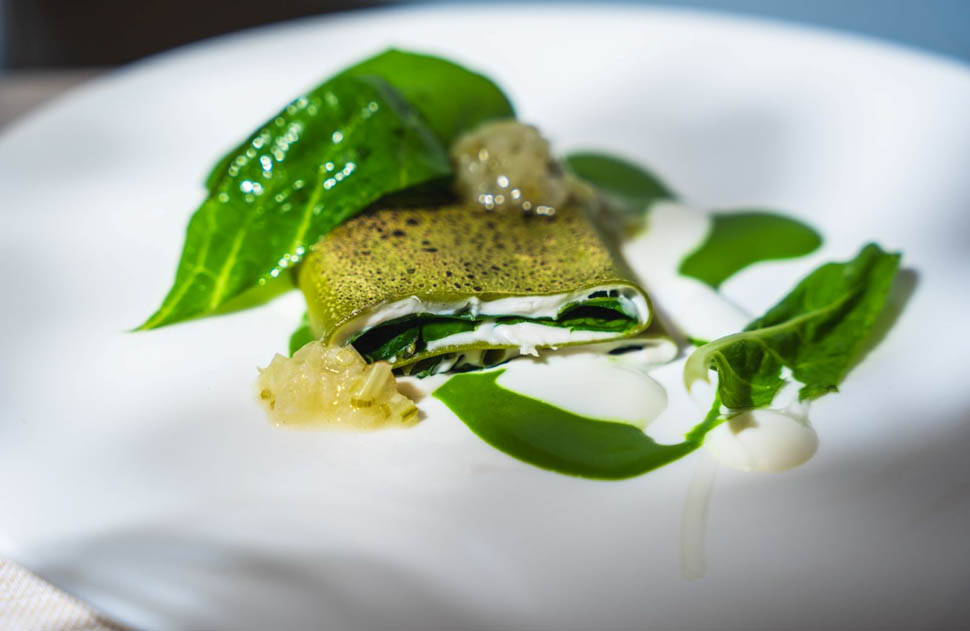
To remain alive, icons accept the challenge of the present. At Essentia, chef Andrea Giacchini creates “Lasagna with rice noodles, pink shrimp, and Swiss chard”—loosely inspired by Vietnamese cuisine and creamed with lemon leaf butter. It is served warm; the filling combines pink shrimp and Swiss chard marinated in oil and salt; it is completed with a Swiss chard pesto and reduced cream that gives it that delicious roundness typical of baked dishes. The twist is tactile: the rice noodles are soft and elastic, contrasting with the freshness of the raw ingredients. A contemporary reinterpretation that does not deny its origins: it dialogues with them.
The unwritten rules: seven layers and a resting time
The seven-layer composition—before cooking—is, paradoxically, the “simplest” part: if all the basic recipes are centered, the overlapping becomes geometry. The difference is often made by the resting time: letting the pan settle is giving it the right to finish on its own. This is where the lasagna gains profile, succulence, and a clean cut. This is where you understand why the MICHELIN Guide rarely seeks it out and celebrates it with judgment: it is complex logistics, material culture, consistency.
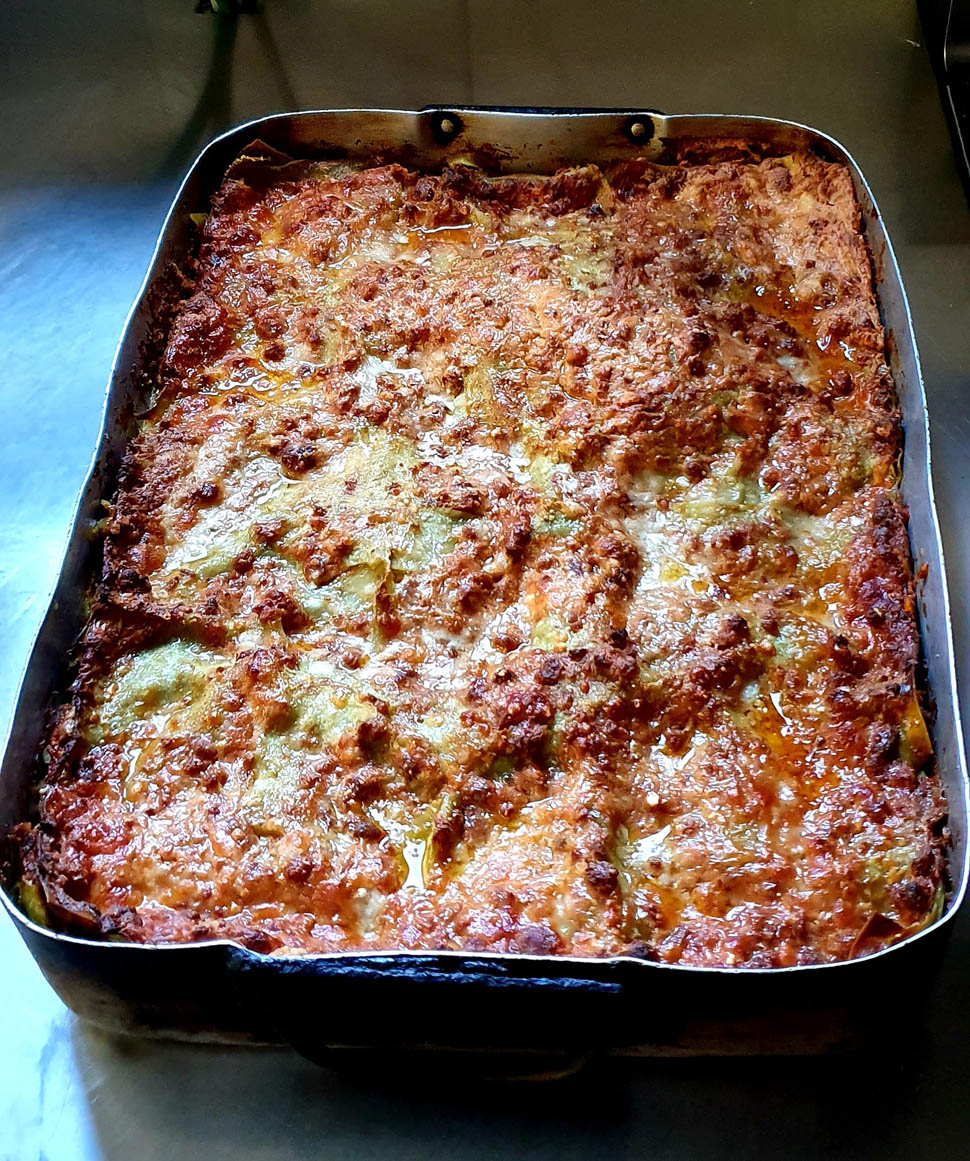 Nuova RomaAn Emilian itinerary, a national grammar
Nuova RomaAn Emilian itinerary, a national grammar
From Savigno to Bologna, from Sasso Marconi to Rubiera, from Castelfranco Emilia to Crevalcore, to Polesine Parmense and Castrocaro Terme, lasagna draws a map of Emilia-Romagna that speaks to the whole of Italy. There, Trattoria da Amerigo trains the memory with cultured variations; La Porta Restaurant preserves the classic with discipline; La Nuova Roma defends the right timing; Clinica Gastronomica Arnaldo celebrates the white way; La Lumira recalls essentiality; Bottega Aleotti opens up to the Renaissance of flavors; Antica Corte Pallavicina dedicates lasagna to the family; Essentia pushes it further, without blasphemy. Lasagna, after all, is the art of keeping everything together without going overboard: memory, season, technique, temperance. And when, on the fork, the layers remain composed and the bite is unique, you understand why this dish, more than others, does not allow for compromise. It requires skill, measure, patience. It requires a concept of cuisine that does not chase the anxiety of pleasure, but the serenity of lasting.

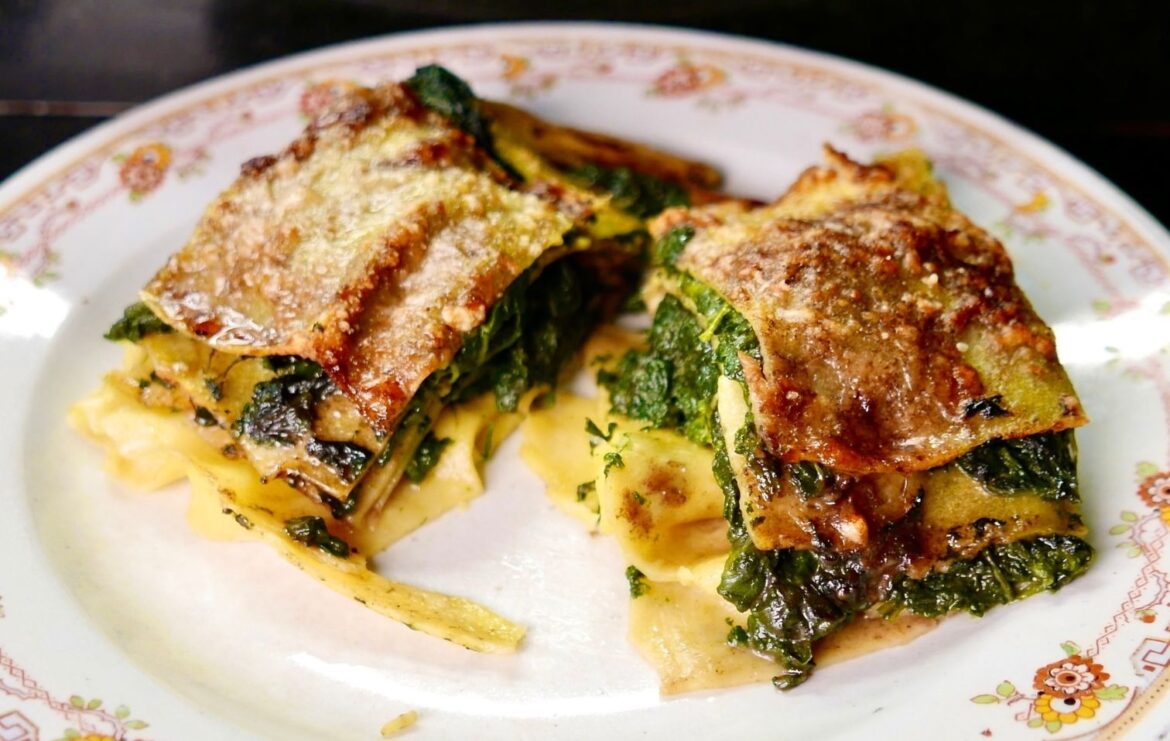
Dining and Cooking